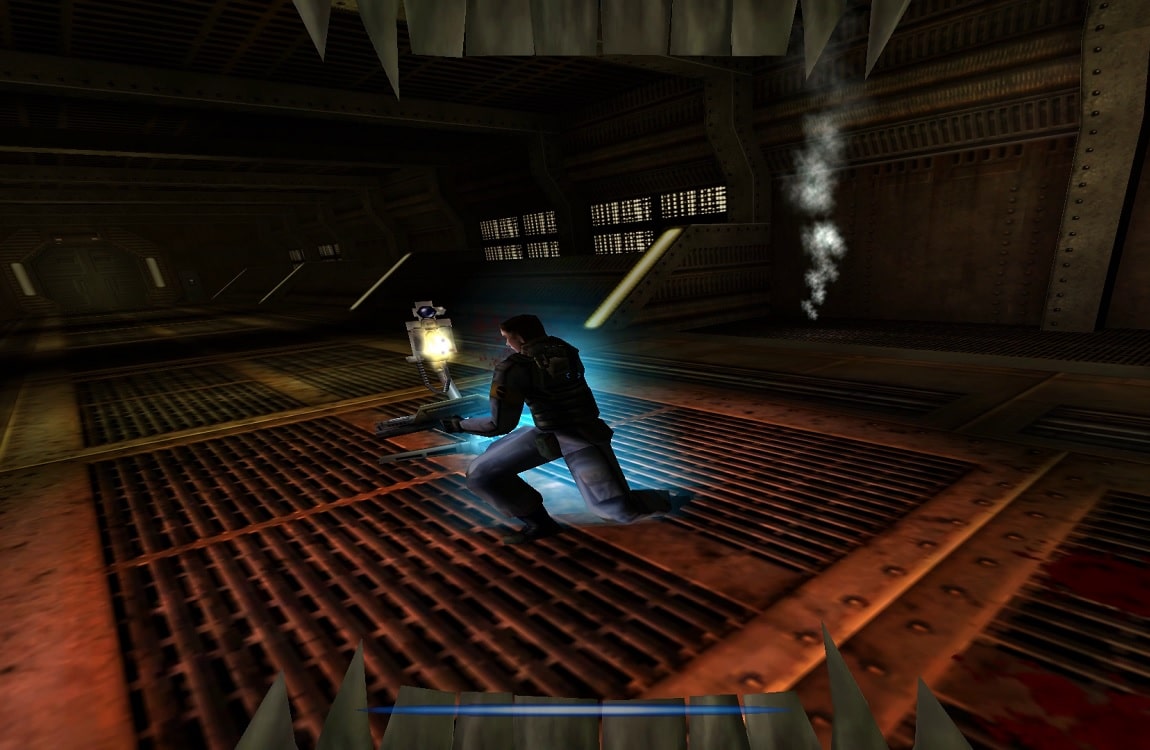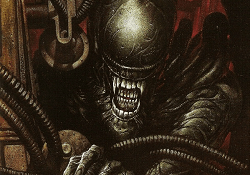Xenomorph Eating Habits: What Do Xenomorphs Eat?
One question that has intrigued Alien fans has repeatedly been: Do The Xenomorphs Eat? While these creatures are often seen as relentless creatures that grow at fantastic speeds, there is much more to their nutritional intake than meets the eye. Find out here what and how much the Xenomorphs eat, and just how messy are their eating habits.
Xenomorph Nutritional Requirements

Xenomorphs, like any living organism, require nutrients to survive. However, their methods of nutrient acquisition are as unique as their physiology. Although it's clear they need to eat, their biology allows them to extract nutrients in unconventional ways, including from the atmosphere, which aids their survival in harsh environments. The Xenomorp's acid blood plays an important part in their metabolism, moving the nutrients around their body at rapid speeds. As Ash said in Alien: "It's adapted remarkably well to our atmosphere considering its nutritional requirements".

Absorbing Nutrients With Dorsal Tubes

One of the most distinctive features of a Xenomorph is the dorsal tubes protruding from their backs. These structures are not just for show; they play a crucial role in their survival. According to Tim Lebbon's Alien books, Xenomorphs can use these tubes to absorb nutrients directly from the atmosphere, a method of sustenance that supports their growth anywhere but the vacuum of space. It is also theorized that the dorsal tubes are used in hive building, but then the process is reversed with the substance being secreted instead of absorbed.
Eating Ship Food Supplies

When aboard spacecraft or in human habitats, Xenomorphs have been observed consuming stored food supplies. This behavior suggests a level of adaptability and opportunism in their feeding habits, allowing them to utilize available resources in a variety of environments. A scene written for the Alien Novelization by Alan Dean Foster described the Xenomorph ransacking the Nostromo's food supplies while still in juvenile form, and then escaping to the air ducts. Unfortunately, this scene never made it to the movie, triggering questions about how the Aliens grow so fast.

Eating Corpses

Xenomorphs are often depicted engaging in the gruesome act of consuming the corpses of their victims. Feeding on the deceased provides a rich source of nutrients, making the most of their predatory efforts. The eating process is quick and violent, while both sets of jaws are used to rip pieces of flesh off the body and swallow them. When given the opportunity, chestbursters have been shown to stay beside the host after birth, consuming part of the body when nobody disturbs them. This would allow them to grow even faster.
Xenomorph Guts

As seen in the rare glimpses into Xenomorph anatomy, at least some variants of the Xenomorphs have guts, including the Cloned Xenomorphs and the Newborn from Alien: Resurrection. However, this might be the result of the creatures being tampered with by human DNA, namely Ripley 8. Regardless, the Xenomorph guts must play a part in their eating and metabolism process, similarly to humans. Due to the highly acidic nature of their bodies, the food is most likely broken down very fast and used in a very efficient manner, not leaving any waste behind. There are no instances of Xenomorphs defecating in Alien lore.
Chewing On Bones

An intriguing behavior observed in some Xenomorphs, as depicted in the "Aliens: Alchemy" comic, is their tendency to meticulously strip their prey of all flesh, leaving only the skeletal remains. The single Xenomorph nicknamed "The Dark One" reached a legendary status by terrorizing a nearby colony. This behavior goes beyond mere sustenance; the Xenomorphs have been seen chewing on the bones much like dogs. This act could be indicative of extreme hunger in certain individual Xenomorphs, demonstrating a possibly more instinctual, animalistic behavior.
Headbiting To Gain Health

A particularly brutal aspect of Xenomorph behavior is headbiting. This act is believed to be more than just a display of aggression; it's a way for them to directly extract and ingest vital nutrients from their prey, contributing significantly to their health. It can be theorized that the brains of the victim contain the most vital nutrients for the Xenomorphs. In the Alien vs. Predator games where the player is able to take the role of the Xenomorph, the headbite is the only way to regain health. It works both for live and dead victims, but live humans give more health.
Eating Royal Jelly

Royal Jelly is a substance of great importance in the Xenomorph hierarchy, particularly for the sustenance of their queen. This nutrient-rich material is vital for the development and maintenance of the queen, indicating a complex and hierarchical feeding structure within Xenomorph society. The Royal Jelly allows regular Xenomorphs to transform into Praetorians, and later on, Praetorians to transform into Alien Queens. This happened with the Number Six Xenomorph from Aliens vs. Predator 2010, who "collected" a large number of Royal Jelly canisters, becoming an Alien Queen in the end.
Surviving Without Food

Remarkably, Xenomorphs possess the ability to lay dormant for extended periods without any food, even in the harsh conditions of space. This state of dormancy suggests a remarkable resilience, allowing them to conserve energy and survive in environments devoid of food. However, it's important to note that while they can survive in this state, their capacity for growth and development is likely stunted, indicating a trade-off between survival and advancement. Perhaps the Nostromo Xenomorph and the LV-426 Queen are still floating in space somewhere, ready to be picked up.
Other Species Eating Xenomorphs

In the vast and diverse ecosystem of the "Alien" universe, there are instances where other species turn the tables on the fearsome Xenomorphs, preying upon them. Particularly, facehuggers seem to be the food of choice for at least two different species. The giant species from Aliens: Taste cooked facehuggers on a giant pan, much like fried eggs. The reptilian Aliens from Aliens: Reapers sold Alien eggs on a market and preferred to eat the facehuggers raw while they were still alive. Although humans are sometimes known to consume the flesh of the Yautja, there are no cases of humans eating Xenomorphs, mostly due to the acidic nature of their bodies.
Conclusion
In conclusion, it is clear that the Xenomorphs do eat when the opportunity presents itself. They consume their victims in a violent fashion, using both of their jaws to eat the raw flesh. Their ability to extract nutrients from both organic and atmospheric sources demonstrates a high level of adaptability. However, they are able to withstand long periods of not eating at all, hibernating, and waiting for the next helpless victim to arrive.









